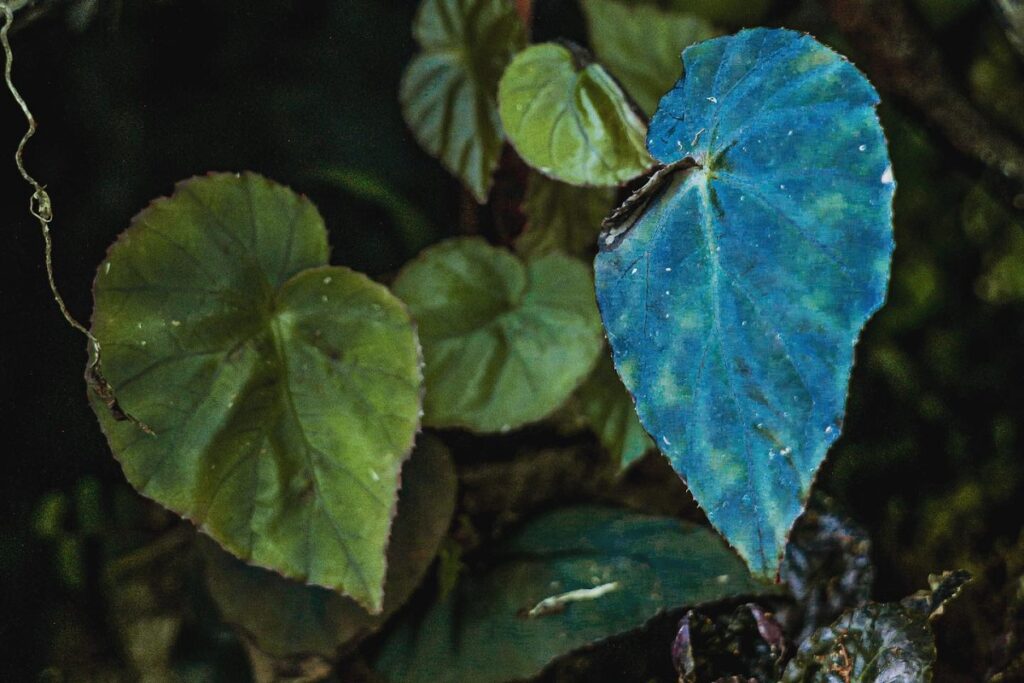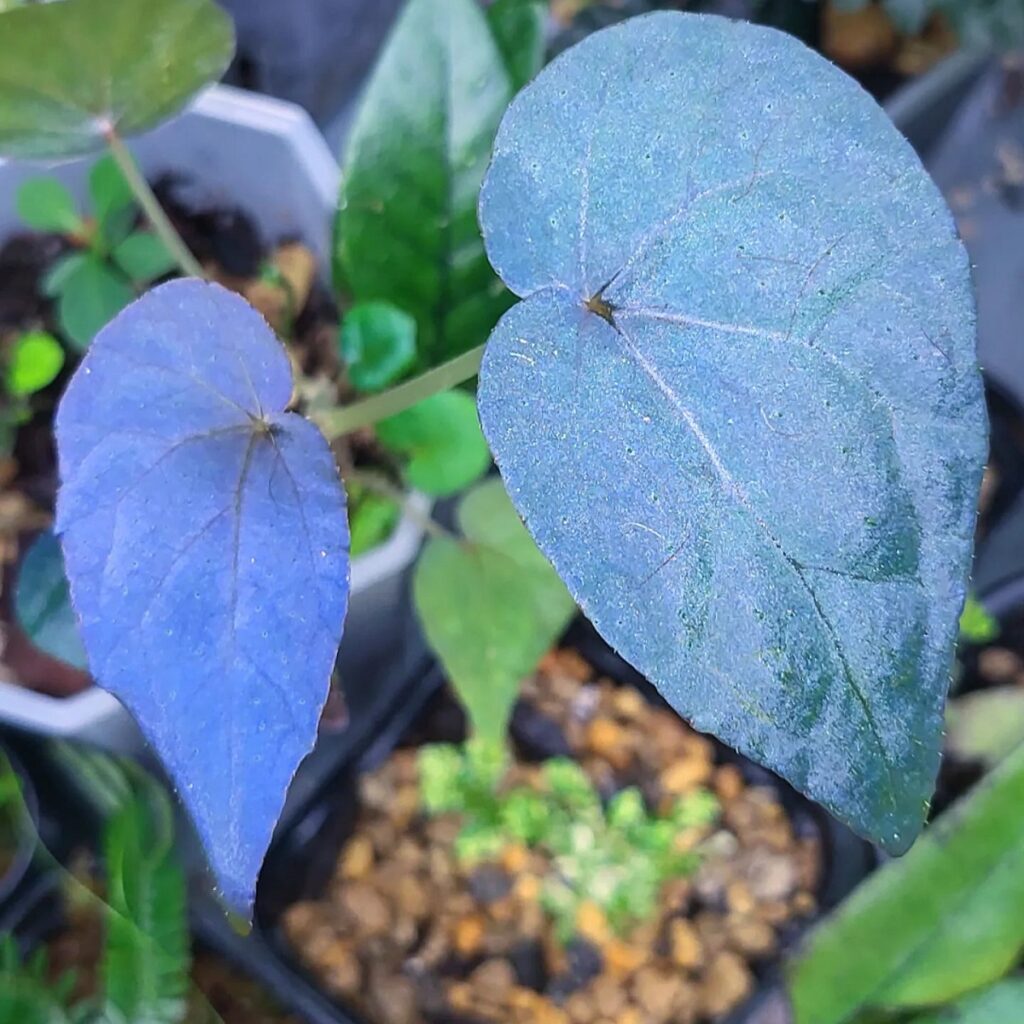Caring for the Begonia Pavonina is not as hard as it may seem. With a few simple tips, you can have this beautiful plant thriving in your garden in no time! This guide will provide all the information you need to ensure its proper growth and propagation.
Whether you’re new to gardening or an experienced gardener, you’ll find plenty of useful advice here that will help keep your plant happy and healthy. So let’s get started with taking a closer look at how to properly care for and propagate Begonia Pavonina!

Contents
Begonia Pavonina Care Guide
Light Requirements
Begonia Pavonina is a beautiful flowering plant that requires bright, indirect light to thrive. To get the best out of their foliage and blooms, they must be placed in spots with plenty of sunlight intensity but not too much direct exposure. You can achieve this by providing adequate shade or utilizing windows that provide filtered light instead of harsh direct sun rays.
Choosing the right window for your Begonia Pavonina is essential. South-facing windows will give them enough light from within the visible spectrum, whereas north-facing windows should typically be avoided as they don’t offer enough brightness. East- and west-facing windows are ideal if you want to strike the perfect balance between optimal placement and enough light for your begonias.
When considering which window to place these plants near make sure to keep an eye on how much heat it gets during the day – if it’s very hot then try moving them further away or choose another spot in your home entirely!
Watering Requirements
The image of a perfect begonia garden is one that glistens in the morning dew, with vibrant flowers and lush foliage. Watering requirements for these plants can be daunting, but understanding the basics will help keep your begonias healthy and happy. Here are some tips to follow when it comes to watering:
- Understand drought tolerance levels. Different varieties of begonias have different levels of drought tolerance; make sure you research specific species before planting!
- Monitor water frequency, moisture levels, and drainage requirements – this will vary depending on temperature, sun exposure, soil type, etc., so watch carefully or risk over- or underwatering your begonias.
- Consider various watering methods – from hand watering to drip irrigation to soaking systems and more – you need to choose the best method for your needs while ensuring consistent hydration of your gorgeous blooms.
Begonia Pavonina care requires diligence when it comes to monitoring their environment; proper watering practices can go a long way towards creating an impressive display full of colorful blossoms throughout the season!

Soil Requirements
Begonia Pavonina requires soil that is well-draining and has a pH range of 5 to 7, making it slightly alkaline. To achieve this, use a mixture of sphagnum moss or peat moss with perlite in a 2:3 ratio. When potting your Begonia Pavonina, make sure the pot you choose has adequate drainage holes; otherwise, water could get trapped in and potentially harm your plant.
When watering your Begonia Pavonina, be mindful not to overdo it as they prefer dryer soil to wetter ones. Watering frequency should depend on how much light your Begonia Pavonina receives and how moist the soil feels when touching it. Soil drainage also plays an important role here, so if you find yourself needing to water more frequently try adjusting the components of your soil mix for better aeration.
Fertilizing is also essential for proper growth but remember to do it sparingly—once every two weeks during the spring and summer seasons will suffice. Lastly, test the soil pH regularly since any drastic changes may cause stunted development or deny nutrients from reaching the roots.
Fertilizer Requirements
It is essential to properly nurture your Begonia Pavonina in order for it to thrive. Fertilizer requirements are an important part of growing this beautiful plant.
Here’s a list of the things you should consider when caring for your Begonia Pavonina:
- Composting needs
- Fertilizer types
- Fertilizer ratios
- Foliar feeding and soil tests
One way to ensure that your Begonia Pavonina receives the nutrients it needs is by composting regularly. This will help replenish its soil with essential minerals, thus providing a nutrient-rich environment for optimal growth. Additionally, using different fertilizer types such as organic or liquid fertilizers can provide additional benefits over time. Furthermore, understanding appropriate fertilizer ratios (NPK: Nitrogen, Potassium, Phosphorus) and foliar feeding can drastically improve the health and vitality of your begonia plants. Lastly, regular soil testing can be beneficial in monitoring the progress of your potted plant’s nutrition levels.
Temperature And Humidity Requirements

The proper fertilizer requirements for Begonia Pavonina can be difficult to manage, as it needs limited space care and the right balance of nutrients. But one factor that is just as important in caring for this unique plant is temperature and humidity levels.
Ensuring your Begonia Pavonina has the right environment will help you avoid any potential problems with growth or health down the line. Proper ventilation should be provided at all times so that temperatures don’t fluctuate too much. High humidity levels are also needed, while low light conditions shouldn’t be a problem since they naturally grow well in shadier areas. You may need to supplement their lighting if it gets too dim though.
It’s important to monitor these environmental factors frequently when growing Begonia Pavonina plants indoors, as not doing so could result in stunted growth and eventually death of the plant. With appropriate attention and maintenance, you’ll have no trouble keeping this beautiful species healthy, vibrant and thriving!
Potting And Pruning Requirements
When potting your Begonia Pavonina, it is important to choose the right container. The size and material of the container are both essential for success with this plant. Make sure you select a container that has several drainage holes in order to prevent root rot and other fungal diseases from occurring due to over-watering.
In addition to selecting an appropriate container, regular pruning is needed in order to maintain its shape and promote healthy growth. Prune away dead or unhealthy parts of the delicate foliage as soon as possible. Doing so will increase the health of your Begonia Pavonina by allowing more nutrients absorbed through soil aeration and trimming roots when necessary. Here are some tips on how to properly care for your Begonia Pavonina:
- Choose a suitable container with adequate drainage holes
- Trim off any damaged or dead parts of the foliage regularly
- Repot at least once every two years while doing root trimming and soil aeration when necessary
By following these simple steps, you can ensure proper care for your Begonia Pavonina and help keep it looking beautiful all year round!
Common Pests And Diseases
In order to maintain the health of Begonia Pavonina, it is essential to be aware of common pests and diseases that may affect its growth. From mite infestations causing yellowing on leaves to fungal rot leading to soft brown rots, these problems can quickly render the plant in an unhealthy state if left unchecked. Bacterial blight and leaf spot are also frequent afflictions that can lead to root rot when not treated promptly.
Prevention is always better than cure; thus pruning excess foliage and maintaining ideal soil moisture levels will help reduce the risk of infection. It’s important to keep the foliage as dry as possible, as wet conditions encourage insect attraction and the spread of spores from fungal infections. Additionally, a natural remedy such as neem oil may be used for mildew while insecticidal soap solution works wonders against white flies and thrips.
Overall, tending your Begonia Pavonina with care helps ensure it stays healthy, happy, and free from any unwanted pest or disease invasion!
How To Propagate Begonia Pavonina
Propagating Begonia Pavonina is a rewarding and fairly simple process. There are two popular techniques for propagating this begonia: stem cuttings and seed collecting, both of which can produce beautiful plants in no time at all.
Here’s how to propagate Begonia Pavonina with ease:
- Gather stem cuttings from the vigorous mother plant by using sharp sterile shears, taking 4-6 inch stems with leaves intact.
- Dip the cut end into the rooting hormone and place it directly into potting soil or water to encourage root formation.
- For propagation via seeds collect the mature fruit capsules when they’ve dried on the plant, then sow them in soil mixed with sphagnum moss placed under bright indirect light conditions.
- Propagate your Peacock Begonia through divisions too – carefully separate each clump while keeping as many roots as possible intact then replant these small sections separately into the moistened soil mix.
With proper care, including watering regularly and providing plenty of humid air around your plants, you should soon have a healthy collection of new Begonia Pavoninas ready to enjoy!
Conclusion
In conclusion, caring for and propagating Begonia Pavonina is a rewarding experience. It requires special attention to light, water, soil, fertilizer, temperature and humidity requirements in order to ensure optimal growth. Pruning and potting are also important aspects of care that can help the plant thrive. Common pests and diseases should be monitored closely so they don’t get out of hand. With proper care and propagation techniques, you can enjoy these beautiful blooms year after year!
